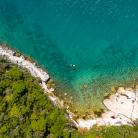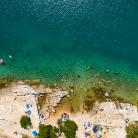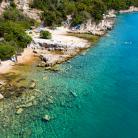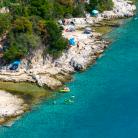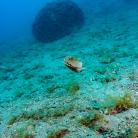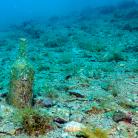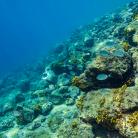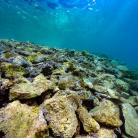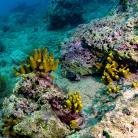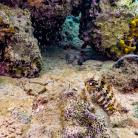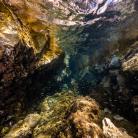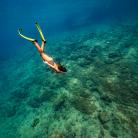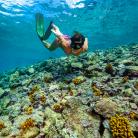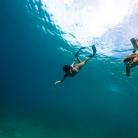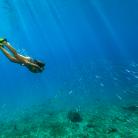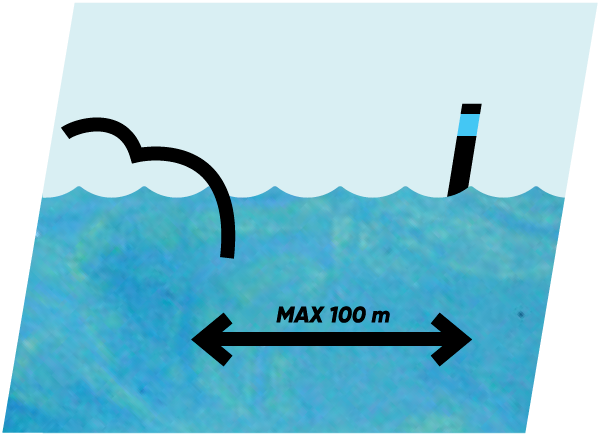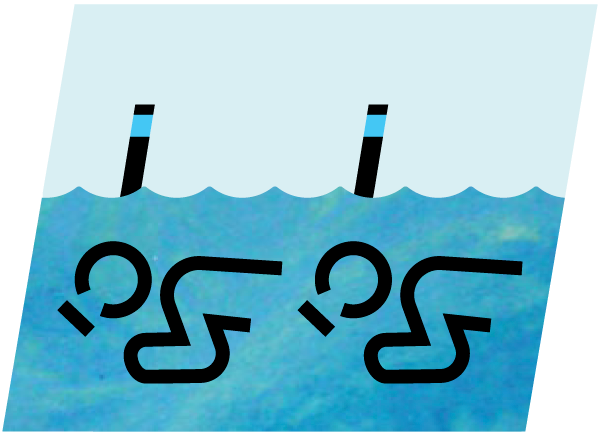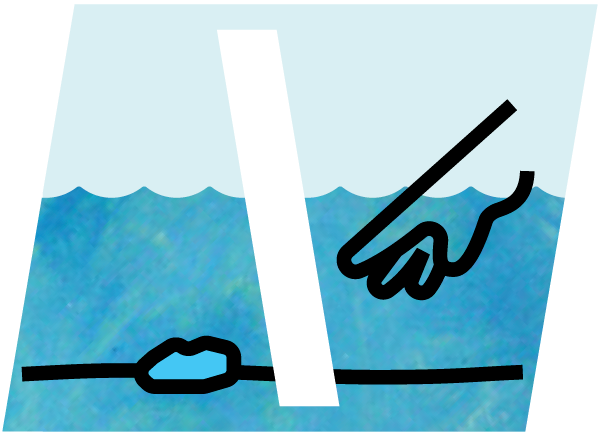Krnički porat
Port of Krnica or Krnica harbour is a sea bay at the foot of Krnica, situated deep inland and well protected from the southern and northern winds. This was once a station of the Austro-Hungarian gendarmes, and later of the Italian finance, during the Kingdom of Italy, as the merchant ships from all over the northern Adriatic docked here in search of a safe haven exchanging goods and catches.
Today, the Port of Krnica is home to fishermen and boats, while the beautiful beaches located on its northern coast, which can be reached by a short few minute walk along the white road, give it that little something extra. At the end of the road, there are several houses and a small pebble beach with benches and shade for those who arrive first.
The Krnica harbour snorkeling location stretches from the small strand, across the first, to the second beach. The bottom in the shallows is covered with small pebbles, while in the deeper parts of the sea there are larger stones of various shapes that fall like a waterfall on the sandy bottom of the bay. In the shallow parts, especially near the small strand, you can see larger boulders, among which schools of small fish hide. You should be careful of urchins if you don't wear fins.
While exploring the bottom in the shallows along the coastline, you will notice rocky furrows overgrown with brown algae resembling small groves with trees and branches swaying with the waves. They are a sign of a healthy and clean sea, and an excellent shelter for various types of combtooth blennies.
If you look carefully at the rocks, you will notice small, regular holes. They were hollowed out by date shells, a strictly protected Adriatic bivalve. The low walls are decorated with various types of fescue and sponges, a snail gathering location. Under each stone, you can find an interesting fauna of small crabs and brittle stars that rush around in search of a shelter because they are the favourite food of numerous fish.
Where the rocks stop and the sandy bottom begins, you can find various live shells such as oysters, warty venus clams and scallops that can also swim, especially if you scare them. On such a mixed bottom, strewn with stones and overgrown with algae, you can find small soles and cuttlefish, because this type of bottom is ideal for them to hide, snails, various starfish, golden anemones and a hermit crab that lives in a symbiosis with the sea anemone it carries on its back.
On the slope towards the bottom, the stones are dotted with yellow tube sponges, dark green sponges and small, white clumps of algae that are home to painted combers, combers and the peacock wrasse. Under the second beach, at a depth of 4 metres, there is a small but well-preserved colony of light brown, round and oval-shaped sod corals.
As the seabed in this bay remembers some ancient times, you can also find an occasional scale weight that might have been used in the exchange of goods from merchant ships, even a bullet, but also a bottle (perhaps rum?) thrown from a pirate ship. There are old petrified ship ropes saved from oblivion, fragments of Roman amphorae and who knows what other treasures hide here to be discovered because throughout history this bay was the outlet of Krnica and the surrounding villages to the sea and their connection with the rest of the world.







